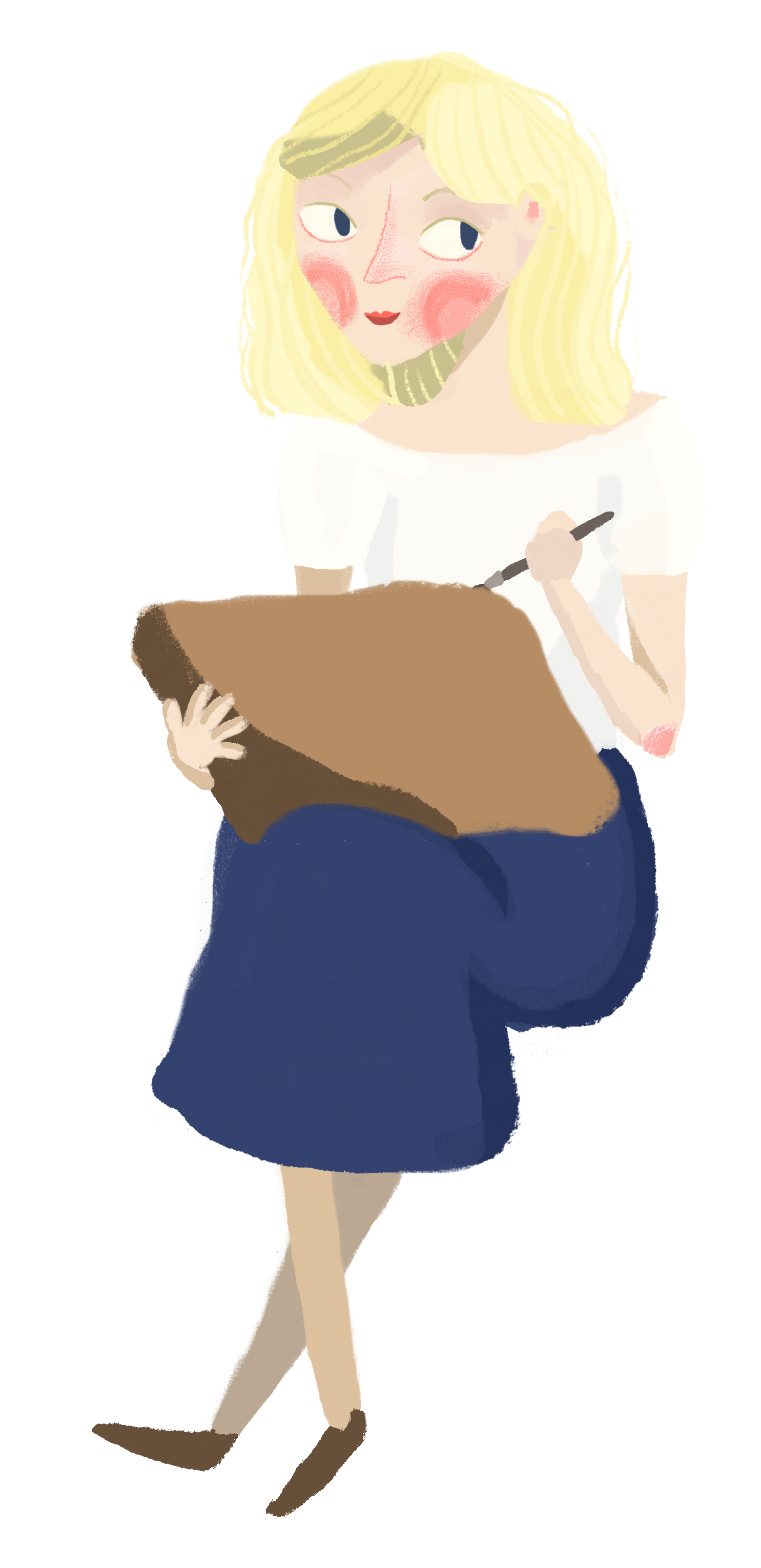
Mary Blair
was a pioneering artist and animator at Walt Disney Studios who got to where she belonged through hardwork and self-advocation in the male dominated animation world. She created colorful films, paintings, and advertisements that resonated the culture of her time.

Childhood
Mary showed an early talent for art. Her father, though often unemployed, wrote in beautiful calligraphy that influenced her own brushstrokes. Though money was tight, she always argued for a portion of her family budget for her art supplies. This knack of arguing for her place helped her later in life to achieve her goals.

At the age of 20, she won a scholarship to the prestigious Chouinard School of Art in Los Angeles, today the California Institute of the Arts. There, she met her husband Lee Blair. He was a serious watercolor artist that introduced her to the fine arts realms of watercolor painting.

Road to Disney
After they graduated, Mary and Lee worked to become fine-art painters. But with being a fulltime artist did not pay the bills, so they each reluctantly supported themselves by working as illustrators at several Hollywood cartoon studios. At one of the places she was asked to join because a manager who worked with her husband said “Why don’t we hire [Lee’s] wife? She’s better than he is!”

Early Disney
Mary worked at Disney for a couple of years as a sketch artist. Though her conceptual paintings caught the eye of Walt Disney, she remained unhappy just sketching pictures of films already conceived. She felt powerless in the creative process. This changed when Lee informed her that he had been invited by Disney to go to Latin America as part of President Roosevelt’s “Good Neighbor” policy to paint for 10 weeks. Feeling that she was skilled enough to be included, she marched up to Disney and argued for her place in the artist group. Walt Disney thought it was an excellent idea.

After Latin American
The trip to Latin American ignited a spark within Mary that combined all of her skills into the vibrant and playful style she is known for today. After returning from Latin America, she began the director of color and concepts for the studio’s films. She worked on films such as The Three Caballeros, Saludos Amigos, Cinderella, Alice in Wonderland, and Peter Pan.

Head Butts with Men
Her success did not come without confrontation with other men at the studio. Though Walt Disney loved and appreciated her work, her male co-workers did not. Many were jealous that so much creative power was given to a woman. Many felt that she was only given the position because she was a woman and not because of her skills. Many did not like her abstract style, telling Disney that it was impossible to put her work into a film because “Her stuff if very flat!”. Luckily, Disney always valued Mary’s work and made sure to put her concepts into life to the best of his studio’s ability.

Freelance Years
Even while at Disney, Mary freelanced to other projects to try to satisfy her creative appetite. She painted murals in hospitals and designed sets and costumes for films. After many years at Disney, Mary left to pursue her dream job as a freelance illustrator. During these years she designed textiles, advertisements, magazines, and greeting cards. The most notable of her freelance projects were her children’s books illustrations at Golden Books, which can still be viewed today.
Walt Disney returned into Mary’s life to ask her to create the now iconic amusement ride, It’s a Small World. This would prove to be one of her most creative work in her lifetime.
"It's a Small World"
Here, she created her own world.

Iconic Style
Mary had always been talented, but her trip to Latin American helped to coax out her ultimate talent, her sensitivity to the culture around her. Whether it was a mother caring for her child or a children playing tag, Mary was able to convey those precise emotion to her viewers. Immersed in South America’s adventure, Mary learned to draw the underlying issues of society and the universal scenes of mothers and their love for their children.

Legacy
Mary’s films and work can still be seen today, whether viewed in her films, illustrations, or amusement rides. Her ability to capture life through the eyes of a child immortalized her work. She was an extraordinary artist that spent most of her find misunderstood by her male animators. Yet, she persisted. Her films still transport use to the far aways lands. Her characters still show the same feelings to us as they were first drawn. Her illustrations still teaches children how to be kind, how to share, how to use your imagination, and other important lessons to this day.
Sources
Life and Flair of Mary Blair - John Canemaker
Magic Color Flair: The Life of Mary Blair - John Canemaker